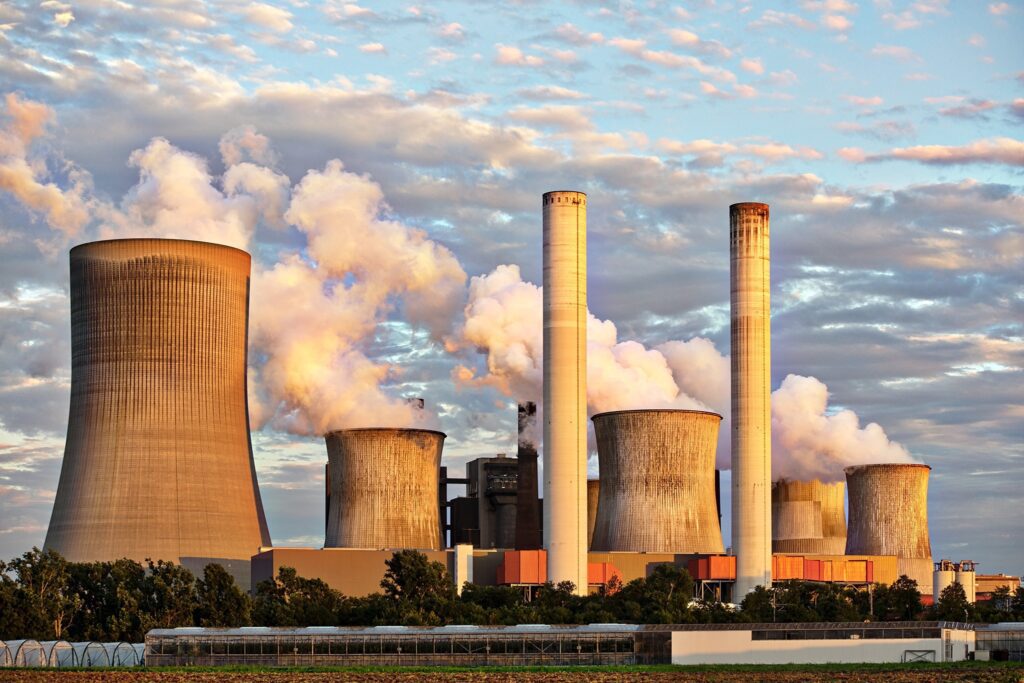For centuries, humans have relied on non-renewable energy resources to power our lives. From oil and coal to nuclear power, these resources are finite and have been used for generations to meet the world’s energy needs. But what exactly are these resources, why do we use them, and what are their impacts? In this post, we’ll examine the different types of non-renewable energy sources—from fossil fuels to uranium —and explore the environmental and social implications of relying on them. We’ll also discuss viable alternatives that can help us transition away from unsustainable energy sources.
What is ‘Non-renewable Resource’
Non-renewable energy resources are those that cannot be replenished in a human lifetime. Fossil fuels such as coal, oil and natural gas are the primary sources of non-renewable energy. Other examples of non-renewable resources include uranium used in nuclear power plants and geothermal energy from deep within the Earth.
The use of non-renewable energy sources has been increasing steadily as the world’s population grows and the demand for electricity increases. In 2016, non-renewables accounted for approximately 60% of global electricity generation.
As renewable energy technology continues to advance, it is becoming increasingly more cost-effective and efficient. In some cases, it is even cheaper than using non-renewables. With the global need to reduce emissions and slow climate change, the transition to renewable energy is an important one.
Types of Non-Renewable Energy Resources
Non-renewable energy resources can be divided into two main categories: fossil fuels and nuclear energy. Fossil fuels are formed from the remains of ancient plants, animals and include coal, oil, and natural gas. Nuclear energy is generated through the process of nuclear fission, in which the nucleus of an atom is split to release energy.
Fossil Fuels
Coal, Oil, and Natural Gas: Coal, oil, and natural gas are the most widely used non-renewable energy sources. Coal is primarily used for electricity generation, while oil and natural gas are used for transportation and heating. The extraction and use of these fossil fuels have significant environmental impacts, including air and water pollution, as well as greenhouse gas emissions.


Nuclear Energy
Nuclear energy is a clean and efficient form of non-renewable energy, as it does not produce greenhouse gas emissions. However, nuclear power plants also have significant risks, including the potential for accidents and the disposal of nuclear waste.
The Role of Non-Renewable Energy in Today’s Society
Non-renewable energy sources provide a significant portion of the world’s energy needs. In addition to powering homes and businesses, they are also used to fuel transportation and industry. However, as the world’s population and energy demand continue to grow, it is becoming increasingly important to find sustainable alternatives to non-renewable energy.
Economic Costs and Benefits of Non-Renewable Energy
Non-renewable energy sources are often cheaper and more easily accessible than renewable energy sources. However, the long-term costs of non-renewable energy, including environmental damage and the eventual depletion of resources, may outweigh the short-term economic benefits.
The Future of Non-Renewable Energy
Depletion and Alternatives: Non-renewable energy resources are finite and will eventually be depleted. As a result, it is important to find sustainable alternatives to non-renewable energy.
Examples of Non-Renewable Energy Sources
Non-renewable energy sources are those that cannot be naturally replenished in a short period of time. This means that once they are used up, they’re gone forever. The most common examples of non-renewable energy sources are fossil fuels, such as coal, oil, and natural gas. These forms of energy have been used for centuries, and while they are still abundant now, they will eventually run out. Other non-renewable energy sources include uranium and other radioactive materials used in nuclear power plants.


Advantages of Non-Renewable Energy Sources
The use of non-renewable energy sources has several advantages. They are generally more affordable than renewable energy sources, and they are typically more reliable. Additionally, non-renewable energy sources tend to have a lower environmental impact than renewable energy sources.
Limitations of non-renewable energy sources
Non-renewable energy sources have many limitations. They are finite resources that will eventually be depleted. They are also expensive to extract and transport, and they can cause environmental damage. Additionally, they are often less efficient than renewable energy sources.
Environmental impact of non-renewable energy sources
Burning of Fossil Fuels
Non-renewable energy sources have a significant impact on the environment. The burning of fossil fuels such as coal and oil releases pollutants into the atmosphere, including carbon dioxide, sulfur dioxide, and nitrogen oxides. These pollutants can cause air pollution and contribute to climate change.
Mining of Fossil Fuels
Mining operations for coal and other non-renewable resources can also have a negative impact on the environment. The blasting and digging required for mining can damage local ecosystems, and the resulting debris can pollute waterways. The processing of coal and other non-renewables can also release harmful chemicals into the environment.
Greenhouse Gas Emissions
The use of non-renewable energy sources also has an indirect impact on the environment through its contribution to greenhouse gas emissions. Greenhouse gases trap heat in the atmosphere, causing global temperatures to rise. This can lead to climate change, which can result in extreme weather events, sea level rise, and other impacts on the environment.
Difference between renewable and non-renewable energy sources
Definition
There are many types of energy sources, but they can broadly be classified as either renewable or non-renewable. Renewable energy sources are those that can be replenished or replaced over time, such as solar, wind, and hydro power. Non-renewable energy sources are those that cannot be replaced or renewed, such as fossil fuels (coal, oil, and natural gas).
Sustainibility
The main difference between renewable and non-renewable energy sources is that renewable sources are sustainable. This means that they can continue to be used without damaging the environment or depleting the supply. Non-renewable energy sources, on the other hand, are not sustainable. They can damage the environment and cause pollution when burned, and they will eventually run out.
Cost
Another difference between renewable and non-renewable energy sources is the cost. Renewable energy is often more expensive to produce than non-renewable energy. However, the cost of renewable energy is dropping as technology improves, while the cost of non-renewable energy is rising due to depletion of resources. In the long run, renewable energy is likely to be cheaper than non-renewable energy.
Environmental Impact
The final difference between renewable and non-renewable energy sources is their impact on climate change. Burning fossil fuels releases greenhouse gases into the atmosphere, which contributes to climate change. Renewable energy sources do not release greenhouse gases and are therefore much better for the environment.
Conclusion
Non-Renewable energy resources have been the backbone of the world’s energy production for decades, but as environmental concerns become more and more pressing, it is important to be aware of their negative impacts. We need to explore feasible alternatives that meet our current needs without compromising our long-term sustainability. Renewable sources such as solar, wind and hydropower are promising ways forward and should be considered seriously when planning any new energy infrastructure projects. By taking steps now towards transitioning away from non-renewable energy sources we can secure a brighter future for generations to come.

